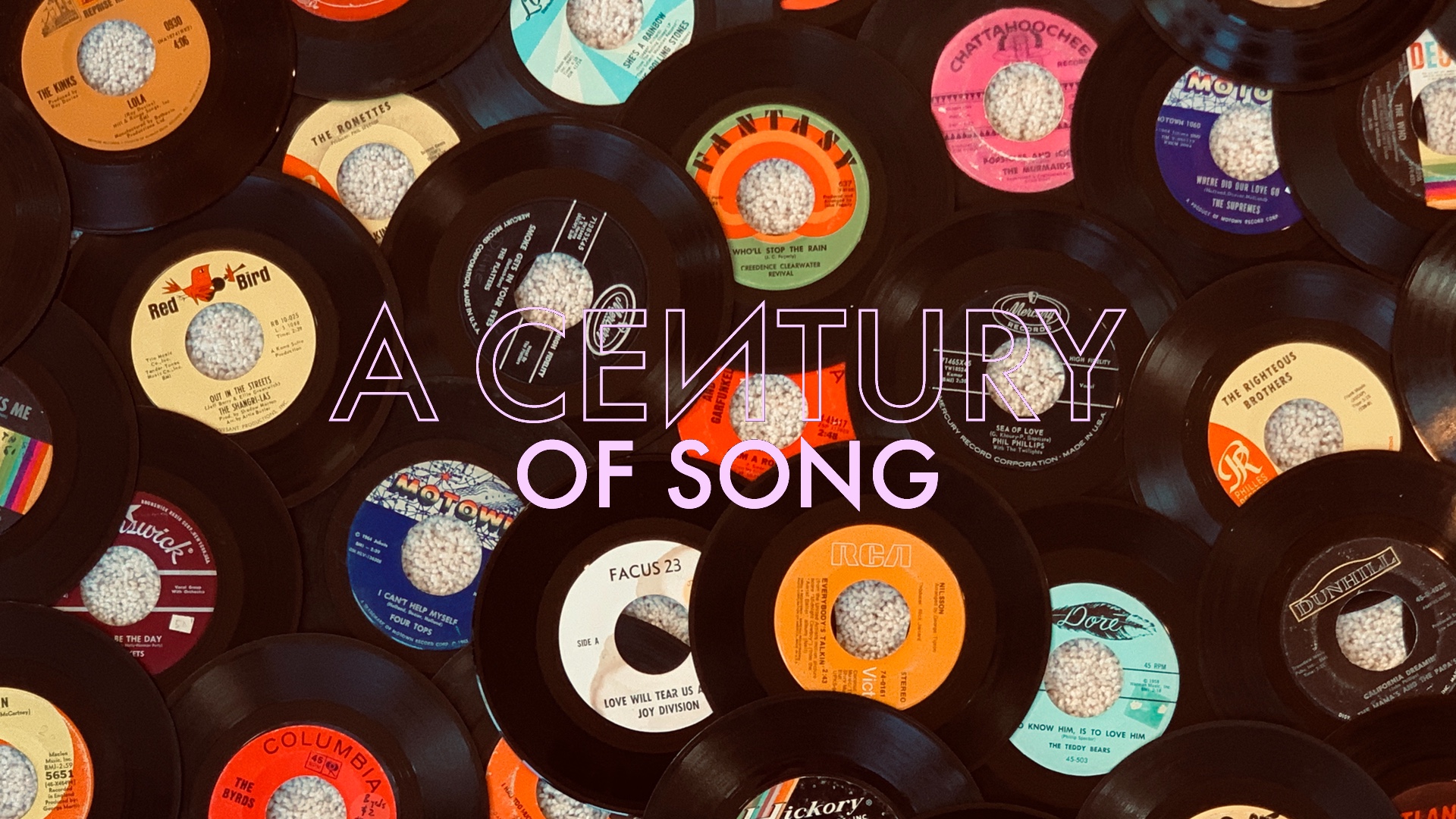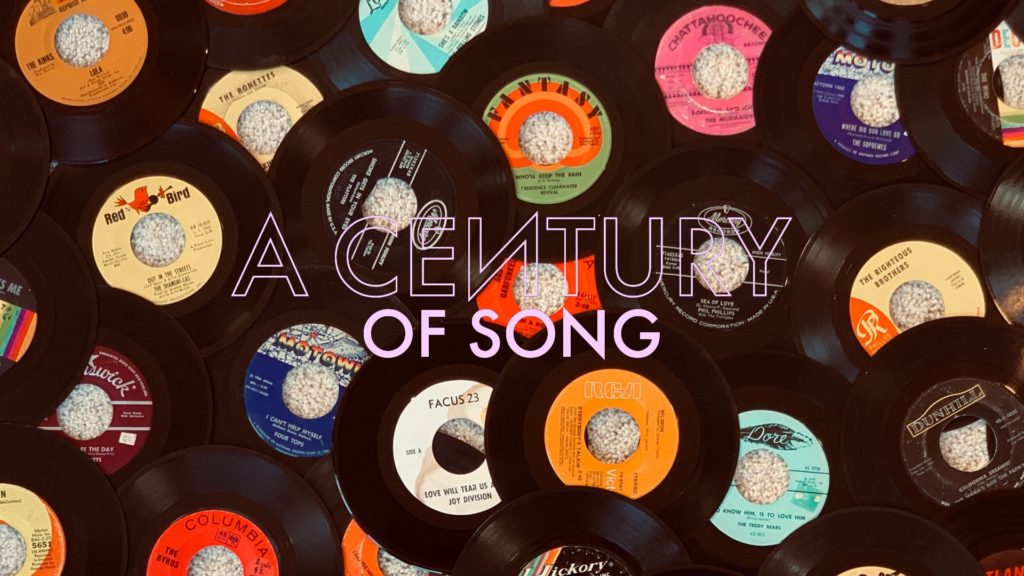
A Century of Song is an attempt to summarize 100 years of popular music through 1000 carefully chosen tracks. Included within this list are landmark singles, stellar album cuts, huge hits, hidden gems, and more than a few personal favorites. Read the introduction for the project here, and enjoy the embedded videos and Spotify playlist.
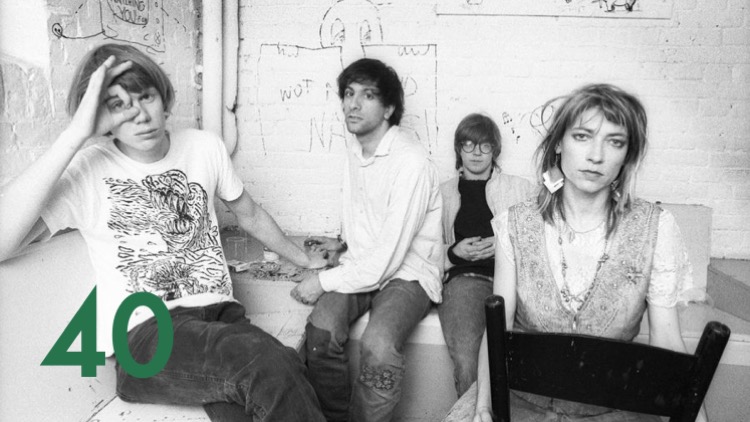

Beginning with their 1986 album, EVOL, Sonic Youth began sanding off some of the rougher edges of their earlier work – music that made the group’s connection to New York’s early-eighties “No Wave” scene abundantly clear. Ever so slightly, their dense experimentalism would give way to something vaguely resembling pop music, making both of the band’s extremes all the more thrilling in the process. 1988’s Daydream Nation would find the group landing at a remarkable equilibrium.
Daydream Nation – the band’s album-length masterpiece – opens up with Sonic Youth’s greatest track. Emerging from the dimly lit darkness that is suggested by the record’s gorgeously haunting Gerhard Richter cover, “Teen Age Riot” slinks ominously for its first eighty seconds, as Kim Gordon coos a cryptic set of lines: part playground taunt, part Stooges-quoting mantra. Then, a break appears in the clouds, and the anthem begins.
Allegedly written as something of a tribute to Dinosaur Jr’s J Mascis, “Teen Age Riot” positively bristles with nervous energy. Though it lacks a traditional chorus, no other track in Sonic Youth’s early catalog comes even fleetingly close to its embrace of rock conventions, and yet, there is still something about “Teen Age Riot” that is thrilling, mysterious, and undeniably the work of a deeply experimental group.
The anarchic noise that the quartet is best known for never shows up in “Teen Age Riot.” After a brief, crashing crescendo, the breathtaking riff that introduced the song proper returns, even more clearly than before. Drummer Steve Shelly can barely make it through a single bar before eagerly clicking the rhythm section back into action. When it re-enters, “Teen Age Riot” reaches full flight. At this precise moment of an already-exhilarating song, rock music has scarcely felt freer.
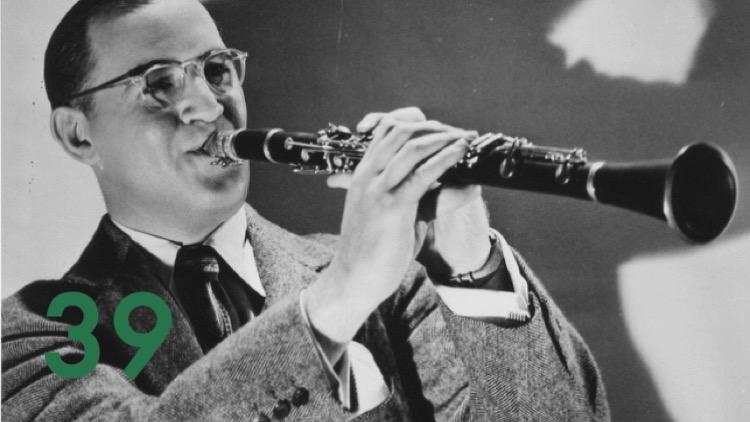

Written by Louis Prima in 1937, Benny Goodman’s orchestra would give “Sing, Sing, Sing” a complete makeover the following year. Their resulting version would first become one of the defining tracks of the swing- and World War II-eras, and ultimately, one of the most iconic recordings in the history of American music.
Already one of the nation’s most popular big bands by the time they got their hands on “Sing, Sing, Sing,” Goodman’s orchestra would only see their star profile rise in the wake of the song’s immense popularity. A particularly spirited performance of the song would be captured at the group’s legendary 1938 appearance at Carnegie Hall – played to a rapturous audience, in what some jazz scholars have referred to as the most important concert in the genre’s history.
Whether live or in the studio, “Sing, Sing, Sing” burns with a melodic intensity and rhythmic heft that had rarely been heard in conjunction before. The latter component was provided by Goodman’s drummer, Gene Krupa, who arguably steals the spotlight from the unforgettable work of the horn section. Krupa keeps the pace over the song’s pulsating eight-and-a-half-minutes – a virtually unprecedented run-time for a big band recording, which required both sides of a 12″ 78-rpm disc.
Like all musical genres, swing’s moment in the spotlight was ephemeral. However, “Sing, Sing, Sing” would, in time, become one of the most heavily referenced songs of its era. Through countless appearances in film, television, and elsewhere, Goodman’s version of the track has endured, remaining one of the most recognizable jazz standards, and still thrilling even decades down the road.
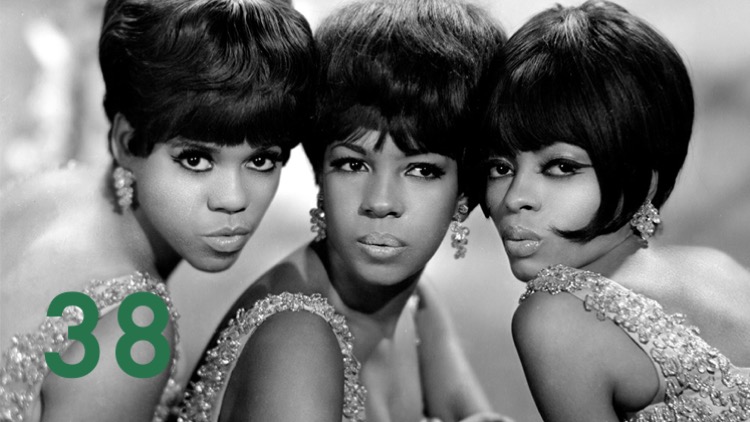

Arguably the quintessential exemplar of the Motown Sound, “Where Did Our Love Go” was the first song by The Supremes to top the American pop charts – a feat that the group would accomplish a dozen times, including with the four consecutive singles released after this one. Though relatively simplistic in its construction, the 1964 track is an immaculate piece of pop perfection.
Opening with percussive foot stomping, “Where Did Our Love Go,” maintains its propulsive forward momentum throughout its gloriously catchy two-and-a-half-minutes. The ringing, restrained vibraphone work of Jack Ashford provides an elegant sense of sophistication to the backing track, and Andrew Terry’s baritone sax solo links the song to the rock and roll sounds of the preceding decade. The cumulative effect is a song tethered to a perfectly balanced mid-tempo pacing.
Essentially all chorus, “Where Did Our Love Go” is carried by Diana Ross’ plaintive, melancholic lead vocal, and the almost-hypnotic response vocals of Florence Ballard and Mary Wilson. Together, they capture a tone that is strikingly emblematic of the “burning/yearning” lyrics of Motown’s Holland/Dozier/Holland songwriting team.
At the peak of their powers, The Supremes were the only American group whose commercial pull rivaled that of The Beatles. The trio would release scores of remarkable singles prior to Ross’ departure in 1970 – and several excellent ones afterward – but for my money, “Where Did Our Love Go” stands as the pinnacle of their stellar catalog.
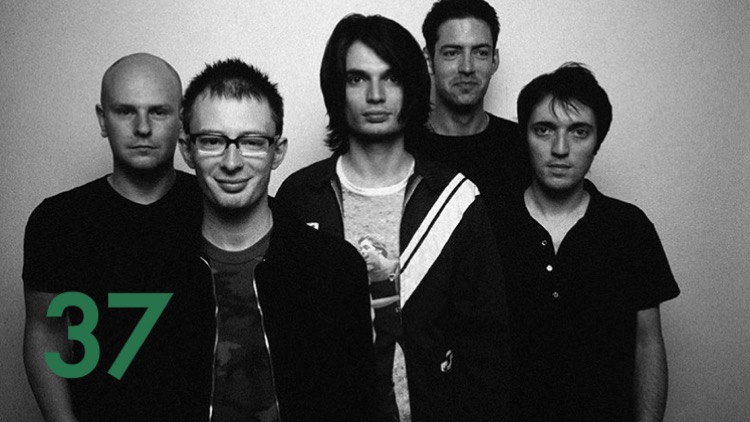

I can distinctly remember seeing the American premiere of the video for “Paranoid Android” on MTV in the summer of 1997. In that initial exposure, the music was – regrettably – little more than an afterthought. Watching the still largely inexplicable clip with my younger brother and a friend, the viewing was mostly consumed by a three-way “what the hell is this?” conversation. I knew Radiohead at that point. I had purchased Pablo Honey from the BMG CD club in 1993 on the strength of “Creep,” and though I had initially slept on The Bends, I was a fan of it by the time word leaked that Radiohead’s third album was imminent.
It took a couple of encounters with the video before I could really make much sense of the music, and even then, there was little in my knowledge bank to compare it to. Nevertheless, the intriguing nature of the four-part song – and the media hype surrounding its parent album – set me on notice for OK Computer. This was, however, still 1997. I had gone online only a handful of times, and did not have internet access at home. There was no Amazon, no YouTube, no Spotify. When OK Computer was released in the U.S. in July, there was not a copy to be found in any of my local record stores. I waited impatiently for it to appear, only able to hold myself over through random encounters with that perplexing video clip.
It wasn’t until September that I finally procured a copy of the album – found for $17.99 at Flagstaff’s west-side Wherehouse store. Over the next several months, I would listen to virtually nothing except for OK Computer. No record before or since has ever had such a transformative impact on my music fandom. No other record has ever rendered nearly everything else in my collection obsolete. There is one remaining track from OK Computer on this list, but “Paranoid Android” still holds a special place as the song that first introduced me to the greatest album of my lifetime.
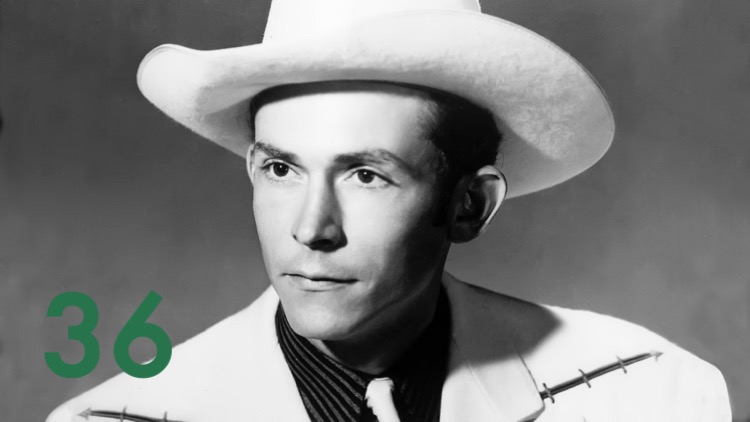

No figure looms larger in the history of American country music than Hank Williams. A consummate talent – as both a writer and interpreter of song – Williams weaved the heartbreak of his own biography into every track that he ever recorded during his brief lifetime. Nowhere did he do so more profoundly than on his masterpiece, “I’m So Lonesome I Could Cry.”
Released as the B-side to 1949’s “My Bucket’s Got a Hole in It” – remember, upbeat tracks were generally considered more commercially viable than ballads – “I’m So Lonesome I Could Cry” doesn’t even attempt to put on a brave face. Instead, it embraces loneliness in such a manner that its combination of words and music ache in a way that is nothing short of palpable.
Though Williams had traded in this kind of melancholy before – and would do so until his death in 1953 – nowhere else in his catalog is the mood sustained in such an affecting manner. His deep desperation pings through Jerry Byrd’s plaintive pedal steel guitar, and the skeletal accompaniment of the small backing band is both morose and resigned.
Hank Williams was far too varied an artist to be pegged as simply a “sad boy with guitar,” but it was a trope that reached a manner of nearly unequaled urgency on “I’m So Lonesome I Could Cry.” Resultantly, the composition has become an indispensable entry into the canon of great American songs – echoed decades later, in both faithful tribute versions, and countless songs that draw from a similar well of despair.
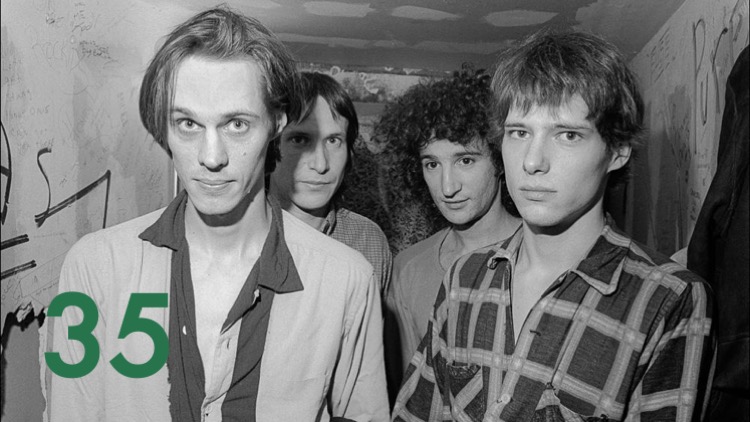

Almost as soon as punk rock was christened as such, enterprising artists on both sides of the Atlantic began pulling at the edges of the genre like taffy, expanding its parameters beyond the relatively limited confines of its first wave. Arguably no band did more to bring about the sound known as post-punk than New York’s Television. Armed with punk’s energy, Velvets-style cool, and two gifted guitarists, Television made a lasting first impression with 1977’s epochal Marquee Moon.
The album’s centerpiece, “Marquee Moon” serves as a stirring showcase for those guitarists: Richard Lloyd and Tom Verlaine. Neither Lloyd nor Verlaine fit neatly into the rhythm/lead mold of most guitar duos; instead, each developed unique sounds that were interestingly individually, and magical concurrently. Their interweaving melodic lines and chords provide more than their share of fireworks across Marquee Moon, but it’s on the eleven-minute title-track where they reach transcendence.
“Marquee Moon” begins as the same kind of jagged pop song as the album’s preceding three tracks. Following the second chorus, Lloyd launches into into a brief-but-triumphant solo, before the band snaps back into lockstep for a third verse. After a third chorus, the rhythm cuts for a few bars, before Verlaine begins a lengthy, jazz-inspired guitar workout. Each round finds him moving further up the scale while the rest of the band’s performance grows increasingly agitated.
The lengthy instrumental section reaches its climax shortly after the eight-minute mark. The loosely winding melodic lines stack up like thunderclouds, and the “rain” of Verlaine’s earlier lyrics is finally brought by a tightly crashing crescendo. After thirty pummeling seconds, the clouds part, and the light drizzle of gently cascading guitar lines usher the song back into one final verse. Somewhere in the middle of all of that, Television proved that even punk rock can become high art.
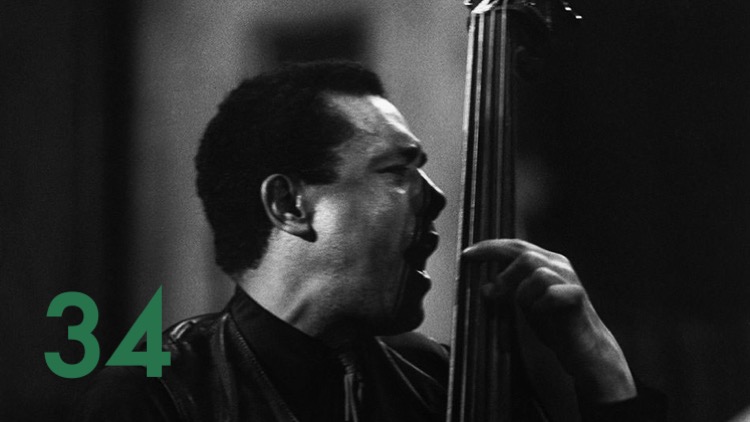

Perhaps no artist was more handcuffed by my self-imposed rules for this project than Charles Mingus – my favorite jazz musician. Not only did I specifically call out Mingus’ 1963 masterpiece, The Black Saint and the Sinner Lady, as ineligible in the introduction to A Century of Song – for my own insistence that it is primarily a suite arranged into four separate tracks – but I also left off his other masterwork, “Meditations on Integration” (or “Meditations for a Pair of Wire Cutters”), on account of there being no definitive studio version. Nevertheless, I think the so-called “Angry Man of Jazz” made a pretty good showing for himself, with a run of seven tracks that ends with this 1964 classic.
Originally recorded as “Haitian Fight Song” for Mingus’ classic 1957 LP, The Clown, “II B.S.” was given another studio run on 1964’s Mingus Mingus Mingus Mingus Mingus; an album that found the bassist/composer/bandleader revisiting several tracks from his back-catalog in a consistently-stunning fashion. Trimming the twelve-minute original to a tight five minutes, “II B.S.” stands as a thrilling introduction to the artistry of one of jazz music’s most brilliant figures.
Opening with a brief bass introduction, “II B.S.” wastes little time reaching a full boil. As was always the case with Mingus sessions, the horn arrangement bursts from the speakers, as does the cracking snare drum of Dannie Richmond – whose heavily punctuated fills give the track a surging energy that surpasses even the fiercest moments in Mingus’ catalog. Despite the roaring intensity of the performances, the track is never less than wholly melodic, and thoroughly inviting to any jazz novice.
It’s that final point that I’d like to emphasize. For far too long, jazz has been relegated to its own corner, separated from the general realm of pop music. Aficionados often act as gatekeepers – as they do in many facets of pop culture – who seem to insist on a certain level of vernacular proficiency among true devotees. Jazz is America’s music. Jazz is the people’s music. As such, I think it’s high time we bring it back into the realm of “pop.” If you’ve even the slightest inkling that you might find yourself intrigued by jazz, give me five minutes. These five right here…
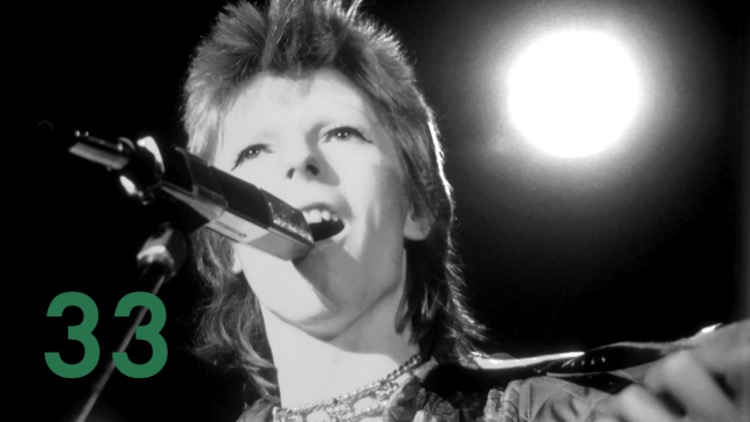

I’m sure most music listeners have had the sensation of being followed by a song before. During the summer of 1995, my friend Jack was incessantly hounded by the then-recent Gin Blossoms single, “Til I Hear It From You.” It seemed that any time he entered a public place or turned on a radio, the song would materialize within seconds. While it was good for a laugh, it was merely – I think – just an explainable coincidence. After all, that song was one of those ubiquitous, mid-nineties modern rock singles that landed on super-heavy rotation for a few weeks.
My own experience with being followed by a song came in the spring of 1998, and – again – was probably just an example of a radio programmer re-discovering an old favorite, mixed with some coincidental timing. I don’t recall ever hearing “Starman” prior to that March, but the then-twenty-six-year-old song found its way into semi-regular rotation on the local “least of several evils” rock station for some reason. Like it must have for whoever put it there, the song burrowed itself into my brain over the course of a couple of chance encounters. Every time I heard it, I wanted to hear it again. Nowadays, that could be easily done, but this was 1998. If I wanted to hear “Starman” on demand, I had to buy a CD – easier said than done for someone on a limited budget, saving up for their first semester of college.
The song found me again on March 31. I remember the date specifically, only because my friend George and I were driving back to Flagstaff after the first ever Arizona Diamondbacks game – his parents were season ticket holders for the inaugural year, and generously gave us the pair of tickets for opening night. We had finished whatever album we were listening to, just as we were re-entering the range for our local radio stations. As the passenger – and controller of the music – I opted to ride the remainder of the trip out by listening to the radio, and, as I flipped to the FM band, literally said, “maybe they’ll play ‘Starman,’” which I’d gone at least a few days without hearing.
By now you know the punchline. For four minutes, that return trip – which had been completely mundane – turned somehow magical. I took it as a sign, and rushed out to the record store the next day to buy Bowie’s 1969-1974 compilation. A week or so later, while digging through my parents’ garage, I found a box of my dad’s old records – a box that hadn’t been opened in several years. The last record in the stack was The Rise and Fall of Ziggy Stardust and the Spiders from Mars. I “borrowed” it – still have it, by the way, Dad – and his turntable as well, effectively beginning my own record collection with that album.
Despite my tendency to be a little too verbose in talking about my heroes, when David Bowie died in early 2016, all I could muster was the following statement on Facebook:
“The world is a far less special place this morning. Thanks for coming to blow our minds, Starman.”
What I was thinking about was not only the remarkable body of work that he left behind, but also an uncanny ability that Bowie had to make the world seem more magical. For me, that began along a dark stretch of a highway that I’d driven on a hundred times before, and it carries on every time I listen to Hunky Dory, Lodger, or Blackstar. David Bowie may have more innovative or important songs – including one left on this list – but this will always be my favorite. It’s where I first got a glimpse of just how extraordinary he was.
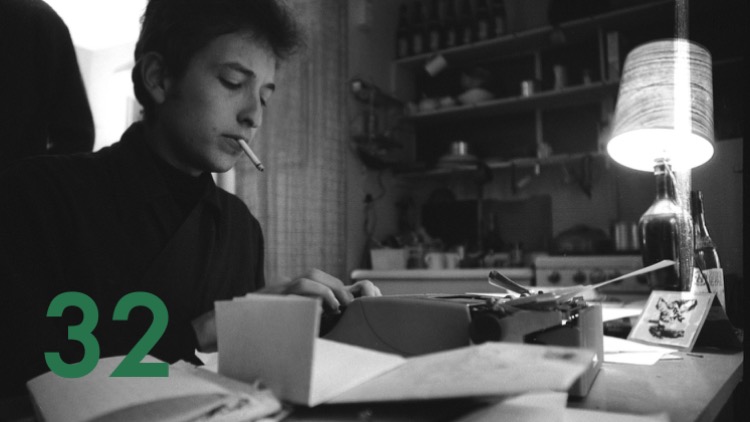

While it is one of those particularly special Bob Dylan songs that is doomed to be eternally relevant, “The Times They Are A-Changin’” still feels uniquely situated within the context in which it emerged in early 1964. Against a backdrop of political and social upheaval, the anthemic song was Dylan’s deliberate attempt to capture what – just months earlier – Martin Luther King, Jr. had referred to as the “fierce urgency of now.”
“Times” was written by Dylan in the fall of 1963: a moment in which the Civil Rights movement, American involvement in Vietnam, and the lingering Cold War were all sitting at a palpable crossroads. Between the song’s recording in October and its release in January of 1964, “The Times They Are A-Changin’” would take on an even deeper sense of poignancy and prescience, following the November assassination of President John F. Kennedy.
Kennedy’s death, Lyndon Johnson’s ascent to the presidency, the battle to pass the Civil Rights Act of 1964, the contentious election of 1964 – with its terrifying “Daisy ad” – the Gulf of Tonkin incident and subsequent escalation of American military presence in Vietnam: all of these things and more made it abundantly clear that the times were in fact changing. So too did the arrival of The Beatles in February 1964, and the cultural sea change that would follow in their wake. The “generation gap” that had emerged in post-WWII America was turning into an insurmountable chasm, and Dylan was – in five eloquent verses – imploring those on the other side to “start swimming or sink like a stone.”
That chasm would only widen in the years to come. Civil rights, nuclear war, environmentalism, women’s liberation, and all manner of policy both foreign and domestic would drive a wedge between Dylan’s Baby Boomers and those of previous generations. In time, the Boomers would find themselves recipients of the same “you don’t understand” message that they had once hurled at their parents and grandparents. To those of them who have struggled to heed the call – whether it be on issues of climate, economics, or social justice – your spokesman has a message for you.
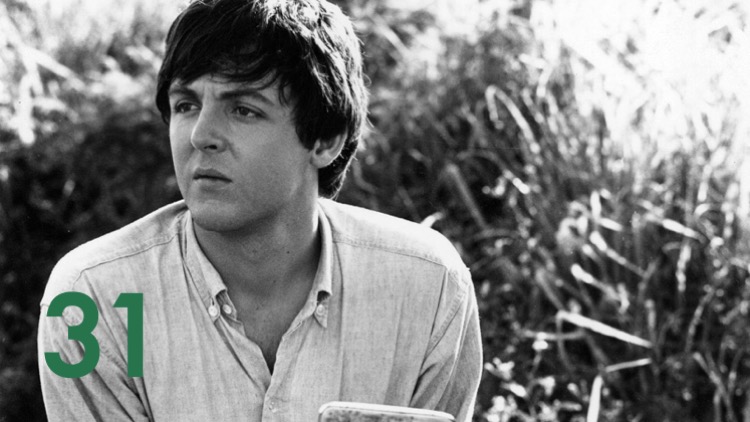

Paul McCartney has never been one to shy away from sharing the stories behind his greatest songs, and that includes what may be the most beloved track that he ever wrote. Famously arriving to him in a dream, “Yesterday” had such an alluring and unforgettable melody, that even McCartney once doubted that he had actually composed it himself.
Over the years, various accounts of John Lennon’s involvement in “Yesterday” suggest that McCartney may have at least some help in its authorship, but for the 1965 recording – which initially appeared on the soundtrack to that year’s Help! – McCartney took the then-unprecedented step of being the only Beatle to appear on the track. Supported by George Martin’s tasteful orchestration, the song became an instant fan favorite, despite not being released as a single in the band’s native Britain.
Nevertheless, “Yesterday” would quickly become something of a standard – one of the key tracks that showed the emotional depth and compositional skill of a group that many serious critics had merely dismissed as a teenage fad. That it accompanied the band’s turn in a more cerebral direction places it at a symbolic crossroads between the undeniable charm of their earlier work with the masterful peaks of their most artistically rewarding era to follow.


